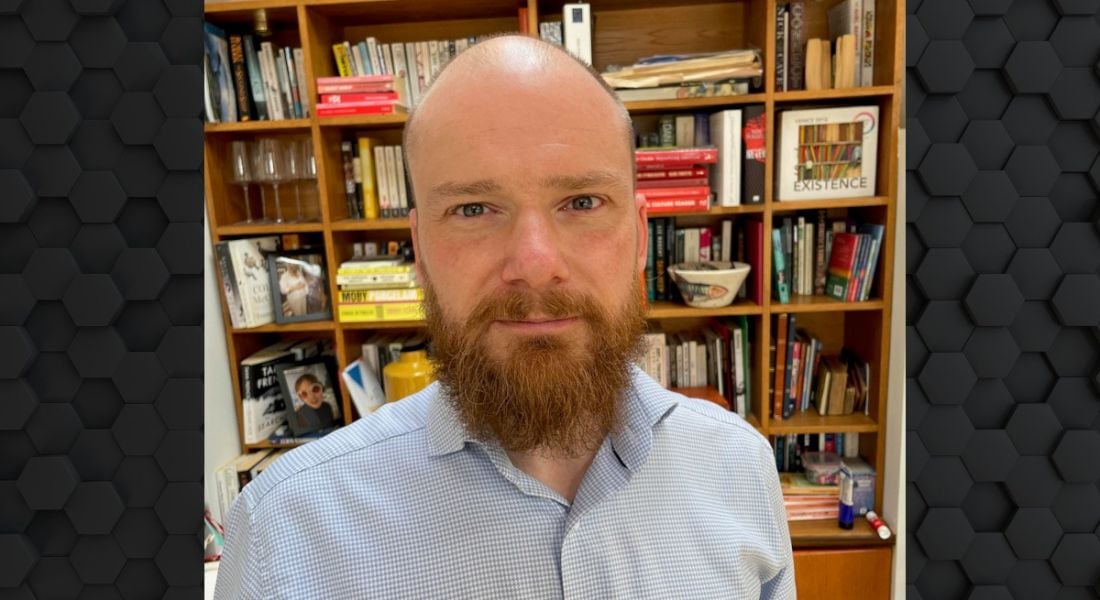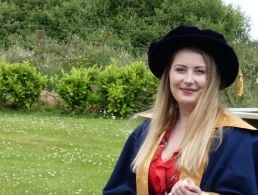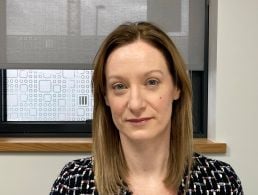Fidelity Investments’ Andrew Kealy talks to SiliconRepublic.com about his career pivot from journalism to software engineering and his experience in the Leap graduate programme.
Before working in tech, software engineer Andrew Kealy worked in the world of newspapers, starting with a summer job at Independent Newspapers while he was still in school.
In the early 2000s, after college, Kealy returned to working at the Independent on Abbey Street in Dublin, where he worked on an early incarnation of the publication’s website. He worked his way up from a freelance sub-editor to assistant editor, working on various projects during his tenure, including the “convoluted process” of producing the newspaper in both broadsheet and tabloid format for several years.
“I worked with great journalists through fascinating times, not just in the news but also in the news industry,” he says.
Kealy eventually moved on to DMG Media, where he took up the position of deputy editor of the Irish Daily Mail, before transitioning to deputy editor of the Irish Mail On Sunday.
However, the news industry was not where Kealy intended to stay forever, as a lifelong love of technology inspired him to pivot into a tech career. Here he talks about his experience of returning to college and eventually joining Fidelity Investments, after participating in the company’s graduate programme, Leap.
What made you decide to move into the tech world?
I always enjoyed technology and in my time at the Independent (newspaper), where I worked on significant projects within the IT department – I enjoyed the team and I enjoyed the work.
The print media industry changed massively in my time. Huge numbers of colleagues left the industry and budgets only ever shrank. Making papers was still an enjoyable challenge and I worked with great colleagues; lockdown and working from home, however, provided a good opportunity to reassess and I decided it was time for a change.
How did you go about making that move?
I had learned to code as a hobbyist by following college courses posted on YouTube, delving into textbooks and building small projects for fun. Even now, the satisfaction I get from creating some small piece of software with which I can interact on screen is entirely disproportionate to the achievement of creating it. I decided to study formally and I went back to college part time to study software development, ultimately achieving a first-class honours in a HDip [higher diploma] in computer science.
‘The tech industry is vast – it’s good to know where your interests lie’
Tell me about your journey to the role you have now.
The more obvious path after newspapers would have taken me to either journalism in a different medium or to a communications role. I became aware, however, of Fidelity’s Leap graduate programme and was interested in the challenge of a less obvious pivot. It was a chance to apply myself to an industry in which I had long had an interest.
I work as a software engineer in FFIO (Fidelity Fund and Investment Operations) tech – as part of a team that has built and develops an engine that processes exchange traded fund data using a collection of microservices. It is a relatively new product and there is the enjoyable challenge of adding and updating features as the business needs evolve.
How does working in tech differ from your previous experience?
As a journalist and editor, I had to react quickly to changing events; the plan for the contents of a newspaper can change several times over the course of an evening. In my current role, it’s easier to plan for the coming weeks and months. We check in every day in our scrum meetings. But we also plan the work for the coming quarter in advance, giving much more certainty as to the coming demands.
Many of the core skills, however, remain the same: being able to work in a team; to communicate clearly; to analyse complex problems; and to consume large amounts of information quickly.
What were the most challenging elements of making a career pivot into tech?
Between my own studies and the graduate programme in Fidelity, I was quite well-prepared for the technical challenges of my new role. I was less ready for the shortcomings in my domain knowledge. My understanding of the inner workings of highly involved financial products was near zero. There is no shortcut through this. I have had to learn the lexicon of the product on which I work – baskets, funds, share classes, securities etc – and learn how these elements relate to each other. This is necessary work to understand the problems we are being asked to solve.
What do enjoy most about your job now and working in tech in general?
I like the problem-solving side of my job – analysing why certain behaviour is taking place, devising a strategy to achieve the desired behaviour. Also, I liked being surrounded by more experienced engineers, so when I hit a wall, there is a solid team there to support me.
What advice would you give to others considering a career pivot into tech?
The tech industry is vast – it is good to know where your interests lie. I got lucky in that the manager of the graduate programme at Fidelity put a lot of effort into making sure I was placed on a team that did the kind of work in which I am interested.
And when starting out, working in-office makes the learning curve much less steep. Being surrounded physically by more-experienced colleagues makes it far easier to get up to speed.
10 things you need to know direct to your inbox every weekday. Sign up for the Daily Brief, Silicon Republic’s digest of essential sci-tech news.








